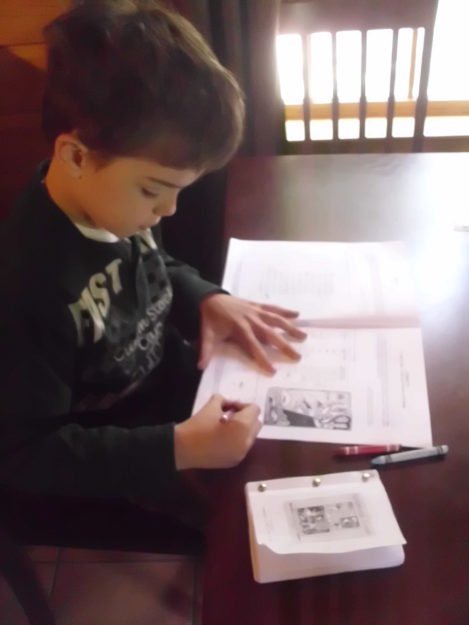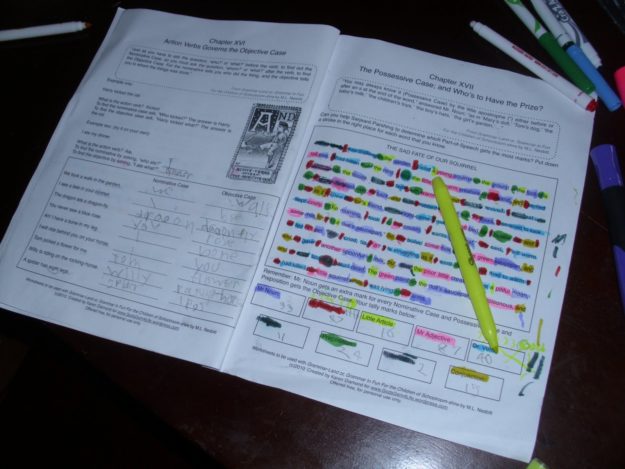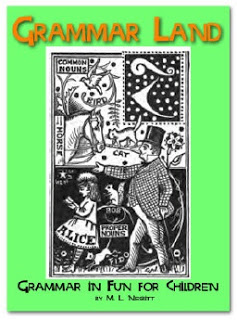When I printed out Grammar Land: Or Grammar In Fun for the Children of Schoolroom-Shire, by M. L. Nesbitt, I didn’t realize how passionately my 2nd grader would tackle it. It is advanced for a 2nd grader (he reads at about a 6th grade level), but he really enjoyed reading it and found it humorous even though it was published in 1878. Seriously. That is NOT a typo. And though it isn’t in what I would call today’s language, it is most certainly an amusing book to read, and definitely a nice break from a regular English grammar lesson.
We even found free worksheets to use with Grammar Land by Jessica Cain at dontneednoeducation (click here for google docs). And thus, we were off and running with a book that talks about English grammar in a very…. different… sort of way.
At the beginning of the book, we are introduced to Judge Grammar and his subjects:
They are funny fellows, these nine Parts-of-Speech. You will find out by-and-by which you like best amongst them all. There is rich Mr. Noun, and his useful friend Pronoun; little ragged Article, and talkative Adjective; busy Dr. Verb, and Adverb; perky Preposition, convenient Conjunction, and that tiresome Interjection, the oddest of them all.
-Excerpt taken from Page 3 of Grammarland
Children are introduced to the Nominative Case, the Objective Case, and the Possessive Case. Judge Grammar’s two counsellors, Dr. Syntax and Sarjeant Parsing assist in the debate, providing stories for the children of Schoolroom Shire to decide: Which part-of-speech is most important?
In addition to explaining the parts of speech listed above in a rather humorous way, this book also introduces verb tenses, number and person. A very fast–paced grammar study, indeed!
As we were reading the book, we were also completing worksheets:


We started color-coding the parts of speech within the stories because it was getting difficult to draw the tally marks!
We not only found this a good way to take a break from normal grammar study, it also provided some great character lessons on quarreling and humility (the characters in the story all think they’re the best!). In retrospect, we could have spent a LOT more time making it into a cross-curriculum study, including a bit of law and government in our learning experience as well.
Because we’ve had experience with identifying parts of speech from our Total Language Plus studies, this was a very good review for us. It helped us to apply all that we’ve learned thus far. Would we have enjoyed it as much if we hadn’t already had a background in identifying the parts of speech? I’m not sure. But Stephen decided to write a book review that said,
I would recommend this book because it’s a fun way to learn grammar.
In fact, he couldn’t even choose a part of the book that he didn’t like. When I asked, he said, “But Mom-Mom, I like the whole thing!” When we went to bed at night, this is the book he was choosing to read before our nightly devotions. So, I would recommend this book for 4th graders through middle school. Really. It’s that challenging and yet still fun. But be prepared to assist your student! And be prepared to have to look things up for yourself if you don’t have a good, fresh background on English grammar.
The e-book and worksheets are free, so go and grab them and find out how much you don’t know about parsing sentences!
A repost from the archives… originally published on May 2, 2011.

